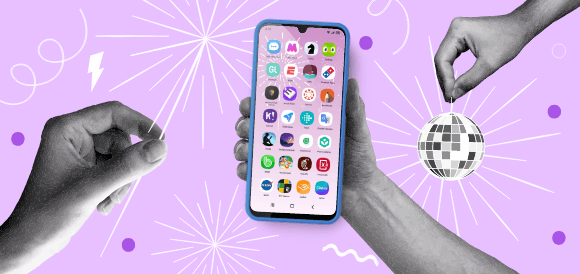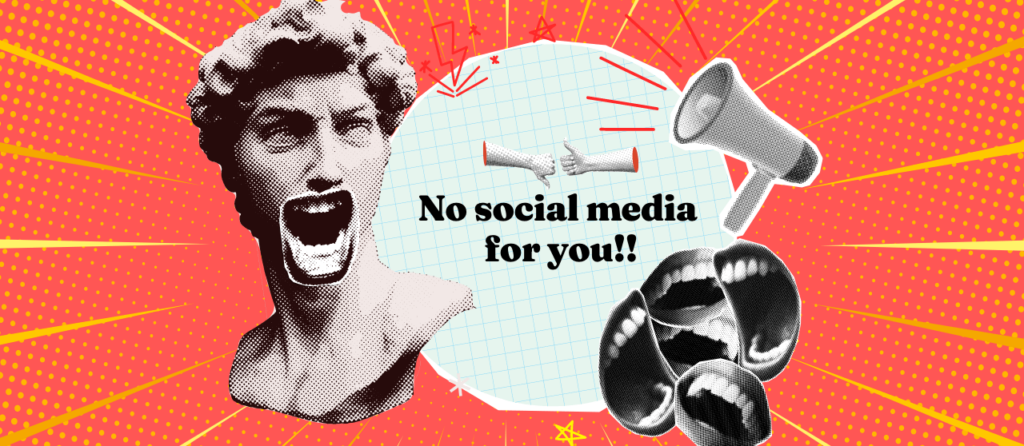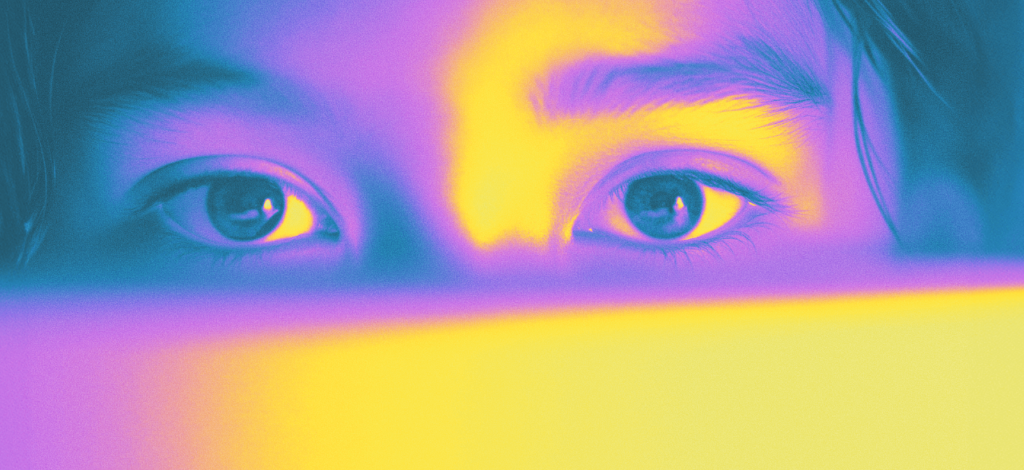Updated – Originally published November 2nd, 2022
Between 2019 and 2020, there was a 94% increase in adolescent overdoses. Social media has amplified the substance abuse epidemic in devastating ways. In fact, commonplace icons have become drug emojis and are used to solicit drug purchases in ways parental filters may not catch.
One interpretation of this conversation could be:
“420🍀💊&4Sale” = Marijuana, Xanax, and Cocaine for sale.
“🔌” = Hook me up.
“💰4💊?” = How much for Xanax?
$30
“💸” = Payment sent.
“📦30⏰” = The package will be there in 30 minutes.
The Value of Understanding Emojis
Today, emojis are considered the fastest-growing global language. Kids have become fluent in emojis, using these symbols in combinations to form entire sentences. When we are aware of the alternate meanings these emojis signify, we can more easily protect our children.
Drug Emoji Meanings
Emojis can have several possible meanings in this emerging language, and a combination of emojis can mean something else entirely. Context should be taken into account as well.
As an example, text messaging a maple leaf might be referencing Canada, or it could be emoji drug slang for an illicit drug.

Combinations of emojis are used as sentences and allow kids to be involved in illicit drug activity without parents being aware. If you see a common emoji grouped with seemingly harmless emojis, take a closer look.
Because many adults don’t understand emojis, young people can use them for dangerous behaviors, including buying drugs online. In fact, drug enforcement agencies have identified several drug dealer emojis.
Types of drugs are referenced when using the snowflake emoji, diamond emoji, ice-cream emoji, and horse emoji, to name a few.
What Parents Need to Know About Drug Emojis
Using fun and colorful emojis to order harmful substances can send the message that using drugs is not a big deal.
Youth Substance Abuse Is Facilitated by Social Media
While experimentation with alcohol and drugs by youth is nothing new, social media is. Kids are bombarded with content that glamorizes substance abuse but conceals its dangers.
Social media glorifies drug use and provides an easy avenue for drug sales. Social media features like disappearing messages and stories also help dealers and users hide their activities.
Skittles Parties
A life-threatening trend, “skittle parties,” has become popular. Kids empty various prescription medications (usually taken from their parents’ medicine cabinets) into a bowl and pass it around multiple times. Teens then take whatever pill(s) they pick up to experience a high. The risk of overdosing or suffering harmful effects is likely.

While illegal substances might be the first thing to come to mind when we worry about our kids using drugs, but prescription drugs can also be deadly. According to the American Addiction Centers, “If your teen is abusing [prescription] drugs, their life is at stake. The issue isn’t any less serious if they’re using prescription drugs as opposed to street drugs. It’s just as deadly.”
When parents are informed about these trends, they are empowered to discuss the dangers of engaging in this reckless behavior with their children.
Kids Can Buy Drugs on Social Media
Drug emojis are used to advertise and purchase drugs on social media. Almost a quarter of teens have seen drugs advertised on social media. One study reveals that 30% of cocaine users have drugs delivered to their porches within 30 minutes of purchasing online, faster than some food delivery services!
By using drug emojis, minors can easily purchase drugs online while keeping their parents unaware.
The Real Danger: Counterfeit Pills and Fentanyl
One of the most alarming trends connected to these emoji-coded messages is the spread of counterfeit pills. Drug dealers on social media often advertise fake versions of real medications — like Xanax, Percocet, or Adderall — using emojis and slang to attract young users.
The scary part? These pills may look legitimate, but can be laced with deadly amounts of fentanyl, a synthetic opioid 50 to 100 times stronger than morphine. Just one counterfeit pill can be fatal.

That’s why even a casual interaction on social media or a message full of emojis can turn deadly. Kids don’t always know what they’re really getting, and it’s our job as parents to help them understand the risks.
Drug Emojis: A Parent’s Guide
Use this guide to understand your child’s online conversations and how to have direct talks about drug use.
Emojis Representing Marijuana
🍁 Universal Emoji for All Drugs
💨 Gust of Wind
🔥 Fire
🌲 Evergreen Tree
🌴 Palm Tree
🍀 Four Leaf Clover
😮💨 Exhaling Face
Emojis Representing Cocaine
❄️ Snowflake
🌨️ Cloud with Snow
⛄️ Snowman
🎱 Billiards
🔑 Key
😛 Face with Stuck-Out Tongue
Emojis Representing Heroin
🤎 Brown Heart
🐉 Dragon
💉 Syringe
🎯 Bullseye
🐎 Racing Horse
Emojis Representing Molly & MDMA
🍬 Candy
❌ Cross Mark
💊 Pill
❤️ Red Heart
😤 Face with Steam from Nose
⚡️ Lightning Bolt
🍄 Mushroom
Emojis Representing Meth & Crystal Meth
🔮 Crystal Ball
💙 Blue Heart
💎 Gemstone
🧪 Test Tube
Emojis Representing Oxycodone
🔥 Fire
🐥 Standing Chick
📱 Mobile Phone
🏈 American Football
💶 Euro Banknotes
🚗 Car
🛒 Shopping Cart
📦 Package
❄️ Snowflake
💤 Sleeping Sign
💯 Hundred Points Symbol
⛽️ Fuel Pump
🍯 Honey Pot
Emojis Representing Percocet
💊 Pill
🅿️ Parking Sign
🔵 Blue Circle
Emojis Representing Xanax
💊 Pill
🍫 Chocolate Bar
🚌 Bus
Emojis Representing Adderall
💊 Pill
A-🚊 Train – A-Train
Emojis Representing Cough Syrup
🍼 Baby Bottle
💜 Purple Heart
🍇 Grapes
Drug Dealer & User Emojis
🔥 Fire – To be “lit” or intoxicated
⛽️ Fuel Pump – To be “gassed” or high
✒️ Fountain Pen – Vaping Pen (Tob`acco or Marijuana)
🔌 Electric Plug – Drug Dealer; Someone who “hooks you up”
🥧🍪 Pie + Cookie – Large Batch of Drugs
🪂📦 Parachute + Package – Drug Delivery
⛽️🚗📲 Fuel Pump + Car + Phone with Arrow – Mobile / Delivery
🚀💣💥Rocket + Bomb + Explosion – High-Potency
💨😮💨😶🌫️ Gust of Wind + Exhaling Face + Face in Clouds – Smoking, Vaping or Getting High
💵🤑👑💰 Dollar Banknotes + Money-Mouth Face + Crown + Money Bag – Drug Money🌈 🍬🟣🟢🟡🟠🔴 Rainbow + Candy + Rainbow-Colored Circles – Skittle Party
When You Find Drug Emojis on Your Child’s Phone
Finding these messages on your child’s phone does not necessarily mean they are using drugs. Emojis have many meanings — sometimes a honeypot represents Oxycodone, and sometimes it’s a term of endearment.
Use your best judgment, try to talk to your child calmly, and consult with medical and mental health professionals as needed.
What to Do if You Suspect Your Child Is Using Drugs
If you have reason to believe your child has tried or is abusing substances, it is not your fault. You are not alone and there is support for you through this process. Below are some warning signs of drug use in teens.sing substances, it is not your fault. You are not alone and there is support for you through this process. Below are some warning signs of drug use in teens.
- Decreased school performance
- Unusual sleep habits or health issues
- Sudden friendship changes
- Breakdown of family relationships
Even though parents may feel panicked, knowing we have the knowledge and resources to help our kids can help us maintain our cool. Children may further hide their activities from us if they fear how we will react.
In fact, shame can actually worsen substance abuse.
This does not mean we approve of their substance use. We can set boundaries, enforce consequences, and offer support and love. Sometimes children may continue to make harmful choices; however, what they choose to do at 14 will most likely be different when they are older.
We can continue to love them and be ready to help them address the problem, regardless of how far it has progressed.
When you see signs, find evidence, or have a gut feeling your child might be using drugs, be sure to find support for yourself while you plan next steps. You are not alone, and this is not your fault. Children are bombarded with harmful messages and dangerous opportunities.

Early intervention is important, but choose a time when your teen is sober and you are both calm. The conversation will be much more productive if both you and your teen are calm and sober.
While you do not have to have evidence of their substance abuse to talk to your child, it can help. Parents may have different opinions about going through their child’s things and looking at messages on social media and text. There is no universal correct approach. You will know what is best.
Prepare for children to be angry (“how dare you snoop through my things!”), deny using (“it’s not my vape pen”), or call you a hypocrite (“you aren’t perfect”).
Describe the situation instead of criticizing and try to de-escalate the situation. Set rules and consequences while keeping minimal expectations for their immediate progress. Reach out to professionals for additional help.
How to Talk With Your Child About Drug Emojis
It’s not always easy to bring up difficult topics, but having open, ongoing conversations is one of the most powerful ways to protect your child online. Here are a few ideas to get started:
- Start with curiosity. Try, “Hey, I read something interesting today about emojis being used to talk about drugs. Have you ever seen anything like that online?”
- Keep your cool. Your goal is to invite dialogue, not shut it down. Even if what you hear is concerning, focus on staying calm and supportive.
- Make it a regular thing. Conversations about digital safety shouldn’t be one-and-done. Revisit them often, especially as your child gets older or starts using new platforms.
This isn’t about accusing or scaring your child. It’s about giving them the tools to recognize red flags and come to you when something doesn’t feel right.
Below are sample questions and phrases you can consider using.
Questions To Ask When You Think Your Child Is Using Drugs
“I have noticed that you’re going to more parties lately. What are they like? Do you feel comfortable?”
“Have you seen other kids using alcohol or drugs? Have you tried any of it?“
“I waited until this morning to talk to you, but last night I noticed you came home smelling like marijuana, and your eyes were bloodshot. Let’s talk about it.”
“5 of my prescription medications went missing this weekend. Let’s talk about that.”
“I’m not here to criticize you. I love you and want to help you.”
“We can work through this together.”
“It may not seem like it now, but these rules are in place to help you.”
Confronting your child about suspected substance abuse takes bravery and preparation. Parents can find more support and resources at DrugFree.org, including an intervention eBook.
Emoji Meanings Are Always Changing
Here’s the tricky thing about decoding emoji use: it’s not an exact science. Emojis can mean different things in different friend groups, regions, or even from one month to the next. A candy emoji might mean someone’s selling edibles, or it might just mean someone really wants a piece of chocolate.
Rather than memorizing every possible interpretation, focus on the bigger picture:
- Is your child suddenly using a lot of coded language in messages?
- Are there strange conversations that feel secretive or hard to interpret?
- Have you noticed mood changes or new spending habits?
Stay in the loop by keeping communication open, checking devices regularly, and using kid-safe tech that gives you more peace of mind.
Parents Make A Difference
Parents influence their children’s activities. Kids are more likely to avoid substance abuse if their parents talk early to them about the risks, establish clear boundaries, and regularly monitor their activities. digital age.










Success!
Your comment has been submitted for review! We will notify you when it has been approved and posted!
Thank you!